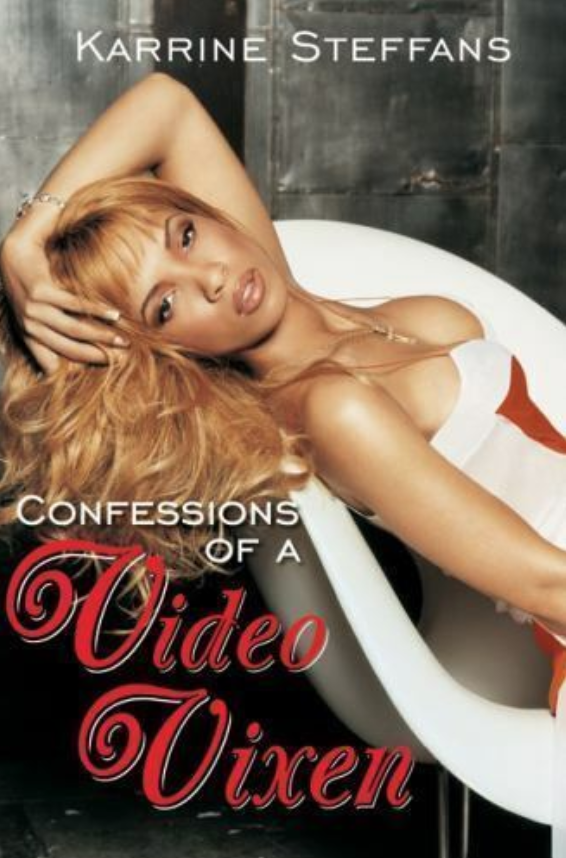Women’s voices have become more vocal over the last 19 years. The #MeToo movement has helped spread the message of the frequency in which sexual assault occurs. While the movement originally started in 2006 by Tarana Burke; there have been other factors that contributed to an enviroment where women felt it was okay to speak their truth.

In the early 2000s when Hip-Hop was on its’ meteoric rise, video vixens became a symbol of sexuality. With that symbolism came a critic of the hypersexualization and objectification of women. Karrine Steffans, aka Superhead, saw an opportunity to tell a story that was not being told. She wrote and published “Confessions of a Video Vixen”, a tell-all book that exposed high profile rappers and the misogynistic nature of rap music and video culture.
Hip-Hop & Misogyny/Rape Culture:
Rap/hip-hop, much like most of the “civilized” world, has a long storied history of rape culture.
Oxford Dictionary defines Rape Culture as:
This includes lyrics that degrade, shame, objectify or humiliate women. This also includes exposing or alluding to, sometimes by name, private sexual encounters of women in songs for profit. A profit that the women exposed in said lyrics more than likely did not profit from. As MTV and BET 106 and Park (and BET Uncut) grew in popularity, so did the importance of music videos. This growing relevancy of music videos led to an extension of misogynistic culture.
Of course, it can be argued that the videos made space for women to make money and garner fame in ways that were rare in the hip-hop community. While women rappers like Lil Kim, Foxy Brown, Eve, and many of the other women who used rap to take control of their sexuality had a very large impact on how women were viewed and treated in regards to sexuality, there was still a majority view of women as sex objects.
The Video Vixen Era
If you weren’t of age during the video vixen era it’s hard to understand how idolized and important they were to the Hip-Hop/Rap music scene.
Video Vixens were Instagram models before Instagram models were a thing.
A great video vixen could make your video legendary and in doing so, could help improve views and sales. These women eventually became so significant that they were often featured on the cover of magazines like XXL and King. While the general public enjoyed the aesthetic that these women brought to the scene, most did not understand what some of them endured to create these videos.
By writing “Confessions of a Video Vixen”, Karrine exposed that the pseudo-sexual-empowerment portrayed was rarely the case behind the scenes. Men used their power to force women into acts that were degrading, disrespectful, or dangerous by threatening their livelihoods. Obviously, not all of the women were forced, some certainly engaged willingly, but as previously mentioned, there were just as many who either through fear or the perception that they had no power, participated in unwilling ways.
How the book challenged the model:
A lot of the power men use to perpetuate this gross cycle of abuse is propped up by enablers and of course by secrecy. By writing her story, Karrine exposed a festering sore that became very hard to dismiss due to the shared power of the people who she alluded to in this book.
While there were surely women who practiced autonomy, saying no, or who were not used in the way highlighted by Karrine’s books, there may have been even more who out of fear or what they perceived to be a lack of power did not feel like they had the choice to say no. A good example of this is the Tip Drill Video. There are clearly willing participants in the video but there are also examples of men attempting to pull down or push to the side women’s clothing as they rush to avoid being exposed.
Again, it’s important to note that not all video vixens were raunchy or expressed their sexuality in ways expressed by Karrine in the book. Her book was important however, in shifting the narrative about women’s sexuality. First it established that women could openly control the narrative about their sexuality. It was rare at the time for women to speak openly about sexuality, using others, and being used. Karrine’s book certainly dominated the charts, media, and conversation for this very reason.
Karrine’s book also shed a light on women’s sexuality. It opened space for the conversation that women do enjoy sex and often pursue it for their own ends.
It also exposed how the power dynamic and money protected men who were using women. This is a theme that we see the current #MeToo movement constantly targeting.
Creating an Environment for #MeToo
It would be absurd to say outright that “Diary of a Video Vixen” influenced #MeToo movement. However, it is no stretch to say that “Diary of a Video Vixen” helped shift societal views on sexuality, abuse, and the sexual exploitation of the rich and famous. The conversation that Steffan’s book sparked one year prior to the date that Burke started #MeToo may have been significant in forcing society to hold a mirror to itself. This change in how we discuss sexual assault and sexuality especially in regards to the rich and famous may have played a key role in encouraging women to be brave and speak up.
We do not mean to say that Karrine Steffans is single-handedly responsible for this shift. There was all manner of famous and non-famous people, political shifts, and technological advancements that contributed to the rise of #MeToo. However, roughly 10 years prior to its rise, “Confessions of a Video Vixen” was crucial in changing the language and the conversation about sex, women, and the power dynamic involved.